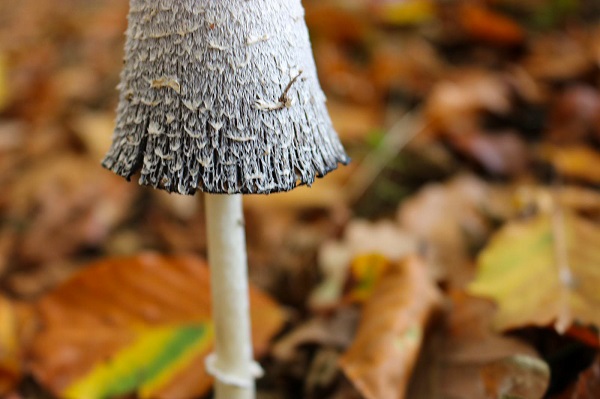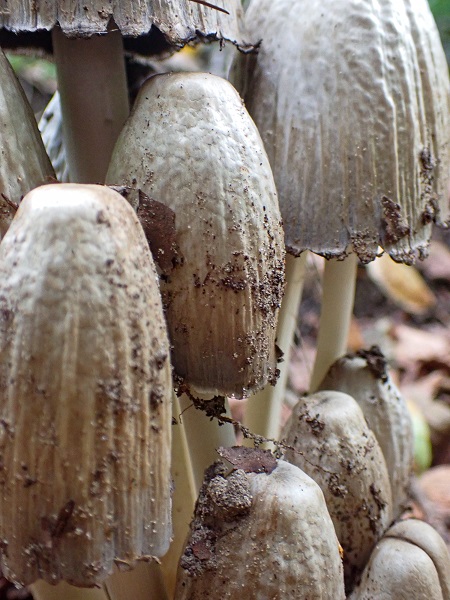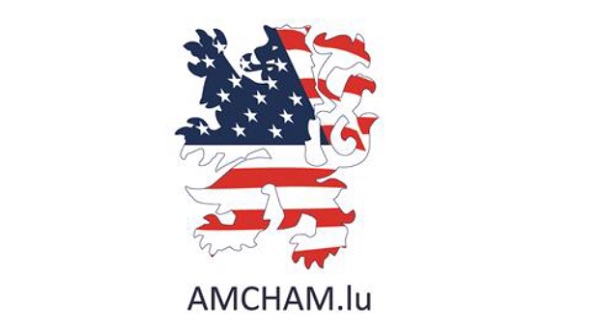 Credit: © Claire Schroeder for natur&ëmwelt asbl
Credit: © Claire Schroeder for natur&ëmwelt asbl
In the latest in a series of articles about current conservation issues, experts at natur&ëmwelt, a leading nature conservation NGO in Luxembourg, spoke to Chronicle.lu about everything one needs to know about mushroom season in Luxembourg.
Natur&ëmwelt volunteer Claire Schroeder helped collect the relevant information from the NGO for this article.
In this guide to fungi, Chronicle.lu and natur&ëmwelt take a closer look at one of Luxembourg’s most magical autumnal treasures: mushrooms. Often admired, frequently misunderstood and occasionally feared, these fascinating organisms play a huge role in the forest ecosystems around us.
Chronicle.lu: Please tell us more about the "Fungi Kingdom".
Natur&ëmwelt: The words fungi and mushroom are often used interchangeably but they actually aren’t the exact same thing. To put it as simply as possible: all mushrooms are fungi, but not all fungi wear the mushroom hat. Mushrooms are actually the fruiting bodies (think apples on a tree) of much larger fungal organisms. Most of the fungus lives underground in the form of mycelium: a vast network of thread-like filaments that quietly weave through soil, wood and leaf litter. You rarely see it, but it’s there, like nature’s Wi-Fi for plants.
Chronicle.lu: What do mushrooms actually do?
Natur&ëmwelt: Beyond looking beautiful and turning your Sunday hikes into something that more closely resembles a fairy tale, mushrooms are ecological MVPs [most valuable players]. Through their underground mycelial networks, fungi help decompose organic material, redistribute nutrients, and even enable trees to “talk” to each other (yes, really). Some fungi form symbiotic partnerships with trees, trading nutrients like phosphorus and nitrogen for sugars produced through photosynthesis. Without fungi, forests would be far less fertile and far less interconnected.
Chronicle.lu: Where (and when) can one find mushrooms in Luxembourg?
Natur&ëmwelt: You’re in luck! Luxembourg is a fungal hotspot thanks to its woodlands, mild climate and reliable seasonal rhythms. The best time to find mushrooms is between late summer and early winter (although you can definitely keep your eye out year round), especially after a rainy period followed by warm days. Mushrooms can pop up just about anywhere - under trees, on fallen logs, across mossy meadows - so keep your eyes peeled next time you’re out hiking. A hot tip if you’re really trying to find some is to pick a spot in the forest that’s quite damp and that doesn’t get too much sunlight and start turning over a few leaves and branches - you’ll rarely be disappointed.
Chronicle.lu: Can one go mushroom foraging in Luxembourg?
Natur&ëmwelt: Absolutely, but there are some rules. You don’t need much: walking shoes, a basket (plastic bags = fermented mushroom soup before you get home [not good]), and maybe a knife or brush. But you do need to follow the country’s foraging laws. Each person is allowed to collect up to three specimens of each species for study and one kilogram of edible mushrooms per day. Groups may have stricter limits, so make sure you’re clued in before heading out.
Chronicle.lu: Can foragers eat what they find?
Natur&ëmwelt: Well… maybe. Luxembourg has many edible mushrooms, but it also has some lookalikes that are toxic or even deadly. So unless you’re a trained mycologist or joined at the hip with one, you shouldn’t nibble on anything unless it’s been properly identified. Luckily, help is available! The Luxembourgish Society of Naturalists can help you provided you have high quality photos and information on location and context of your finds. Their experts are happy to help sort your chanterelles from your death caps, so reach out!
Chronicle.lu: How exactly do experts identify mushrooms?
Natur&ëmwelt: It's not as simple as flipping through a field guide. Experts consider everything: the shape and colour of the cap, the gills underneath, the texture of the stem, the spore print, the smell, even the surrounding environment. Some mushrooms only appear near certain trees, so context is everything. If you’re hoping for an ID, take a full specimen (not just the cap), snap good photos, and note where you found it.
Chronicle.lu: What if one accidentally eats the wrong type of mushroom?
Natur&ëmwelt: Don’t panic, but do act fast. If symptoms show up - even hours later - get medical help immediately and, if possible, bring a sample of the mushroom (or leftovers, or even, yes, vomit). Doctors need to know what they’re dealing with. And even edible mushrooms can turn dangerous if they’re old, rotten or contaminated. When in doubt: toss it out.
Chronicle.lu: Where can readers learn more (and not just guess)?
Natur&ëmwelt: Luxembourg has a lively mushroom scene, with groups like the Groupe de Recherche Mycologique (https://www.grm.lu/fr/) and natur&ëmwelt offering resources, guided walks and educational events. The “Guide to the Mushrooms of Luxembourg” (https://assets-global.website-files.com/62b591e5b25b1b1cafa6114e/6626785de32ac6417fd7515c_Champignon_FR.pdf) is a fantastic starting point for anyone wanting to dive deeper into local fungi. And if you're more into digital sleuthing, mushroom ID forums and email consultations with experts can also help you level up your mycology skills.
© Claire Schroeder for natur&ëmwelt asbl









